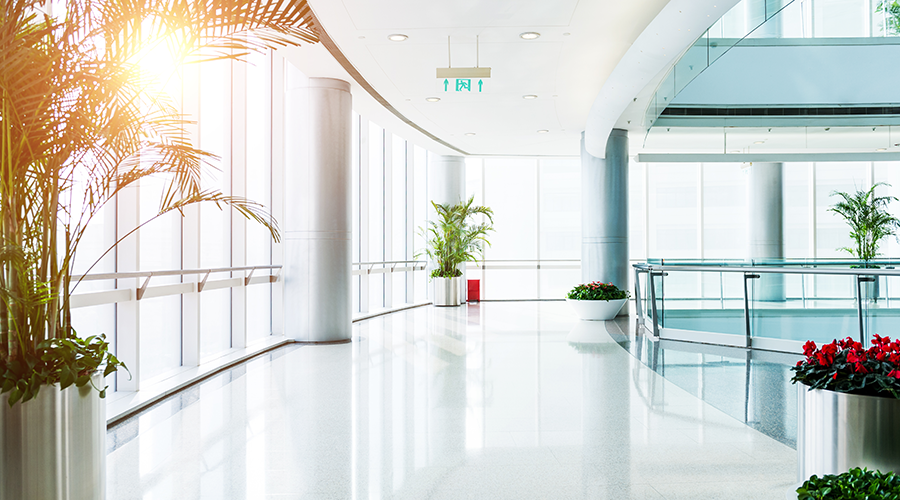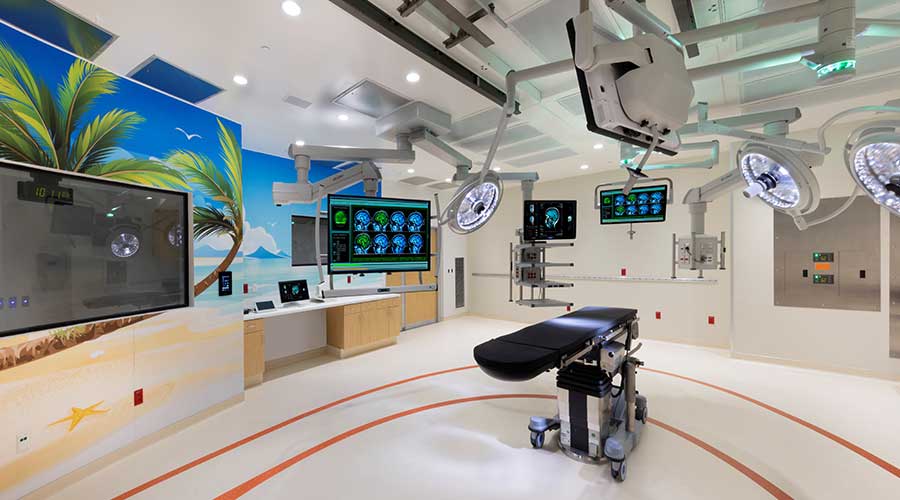When a majority of states went entered stay-at-home orders back in 2020 due to the Coronavirus pandemic, many people found themselves with a new hobby: raising plants. New “plant moms” and “plant dads” sprouted around the country, saying that the greenery was actually providing a sense of relief during such a tumultuous time. And they’re not wrong. According to Haworth, biophilic design can actually improve the overall wellbeing of a person. Meanwhile, the study 14 Patterns of Biophilic Design, Improving Health and Well-being in the Built Environment, by Terrapin Bright Green suggests that biophilic design helps create spaces that are inspirational, restorative and healthy. This reasoning leans into why many more healthcare facilities have decided to add more natural elements to their design.
Healthcare Facilities Today recently spoke with Jennifer Kenson, principal of FCA on how healthcare facilities are reaping the benefits of newfound biophilic designs within their spaces.
HFT: How would you define biophilic design and its significance in healthcare facilities?
Jennifer Kenson: We think of biophilic design as an approach to design that is based on humans’ instinctive reactions to the natural world. We then leverage that knowledge for our interiors.
It is significant to healthcare facilities as the approach reinforces the evidence-based design ideas, including elements such as natural light and views of nature, that have been increasingly incorporated into interior spaces since the 1980’s. In healthcare spaces, these elements can contribute to reducing stress levels and enhancing mood, while working in tandem with staff members to provide a considered patient experience centered around holistic well-being. Ultimately, biophilic design acts as another tool for healthcare facilities to prioritize patient recovery.
HFT: How does biophilic design impact the overall well-being and healing process of patients in healthcare environments? What about staff productivity?
Kenson: Spaces that implement biophilic design principles can improve patient and staff wellbeing. By nature, humans feel more relaxed and at ease in spaces that feel organized, are easily understood or navigable, and that feature proper scale and proportion, in addition to elements that can be found in nature. These spaces should have views of natural settings, and interior design applications of materials and colors that mimic nature. Research studies show that creating an environment where people feel at ease can lower anxiety and reduce pain medication needs, ultimately decreasing the length of stay.
HFT: Are there any specific challenges or considerations to keep in mind when implementing biophilic design in healthcare settings?
Kenson: More decorative solutions, such as faux plants, decorative lighting, or highly textured surfaces, can be a challenge to implement. These examples, depending on their level of intricacy, must be dusted and maintained regularly. If they cannot be properly cared for by the EVS teams, other options should be considered as these materials must still meet the clinical, infection control-specific safety requirements for cleanliness and sanitation.
HFT: Are there any specific plant species or natural materials that are particularly well-suited for biophilic design in healthcare settings?
Kenson: With plant species, the approach is typically to feature plants that are low maintenance but are native to the community. Scale is also a consideration when making selections. When determining plants versus trees for instance; if trying to create an impactful design element, one might choose larger specimens.
Mackenna Moralez is the associate editor for the facilities market.

 Authorities Issue Joint Advisory on RansomHub Ransomware
Authorities Issue Joint Advisory on RansomHub Ransomware 9 Steps to a Successful Healthcare Capital Project
9 Steps to a Successful Healthcare Capital Project Steward Health Care to Sell Wadley Regional Medical Center in Texarkana
Steward Health Care to Sell Wadley Regional Medical Center in Texarkana Texas HHSC Breaks Ground on New Terrell State Hospital
Texas HHSC Breaks Ground on New Terrell State Hospital Enhancing Behavioral Healthcare with Thoughtful Design
Enhancing Behavioral Healthcare with Thoughtful Design